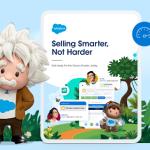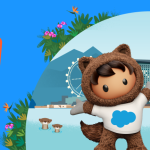The Great Resignation: it’s a concept plaguing organisations globally, and the ASEAN region is no exception. In Singapore, for example, a survey by jobs portal Indeed revealed that 24% of workers intend to leave their current employer in the first half of 2022. Forty-nine percent are unsure if they will stay in their positions for the next six months.
So, what’s driving this instability?
There are a few factors at play. For one, many employees are re-evaluating what they want from their careers in the wake of the pandemic. Another contributing factor is around retention. Securing a great employee is all well and good. However, if you’re not working to keep them engaged, you risk losing them.
In fact, outstanding employee experience (EX) has become the competitive edge no business can afford to ignore. Why? Because highly engaged employees improve customer satisfaction and revenue. Now more than ever, a large number of the workforce is considering ditching their employer for a better offer.
Having been recognised as one of the Best Workplaces in Asia for the fifth year in a row, we’ve collected a few tips to help you attract the best talent and keep them engaged.
1. Embrace new ways of working
Having a flexible work environment is no longer optional. According to the EY 2021 Work Reimagined Employee Survey, six in 10 respondents in Singapore, Malaysia, Indonesian and the Philippines said they would quit their jobs if not provided post-pandemic flexibility. However, 60% of Singaporean respondents to the Salesforce APAC Employee Engagement Report said their employers have limited or no technology to support flexible work.
This disconnect will be a big driver in employee turnover, as flexible work practices become the norm, not the exception. In a tightening labour market, the most competitive talent will demand flexibility. If your business cannot fully support remote work, it will put you at a disadvantage.
Here at Salesforce, we’ve adopted a “success from anywhere” mentality, reimagining the physical office as a digital one. Our employees can cut down on time-consuming commutes, while introducing more flexibility to their work and home lives.
“From speaking to the market, we hear that most employees want to have the optionality of flexibility,” explained Clarissa Wang, Senior Recruiting Manager, Salesforce. “They have also been telling us that many employers are trying to offer this, but when it comes to executing and turning it into a reality, most employers fall short. We find that this is a great opportunity to share how Salesforce has frameworks, programs, and trainings to ensure flexible working is scalable and sustainable, and how the “flex team agreements” are critical in boosting psychological safety in a flex setting.”
2. Workplace branding is critical
Your employee-focused branding needs to be as strong and unique as your customer-focused branding. Just as you attract, engage, and retain customers, you need to do the same for employees.
An ‘Employee Value Proposition’ (EVP) is a useful way to define what makes your organisation special to employees. Gartner defines EVP as having five key attributes:
- Opportunity: for career growth and development
- People: quality of managers and coworkers, senior leader reputation
- Organisation: market position and social responsibility
- Work: high interest in job and work/life balance
- Rewards: compensation, benefits, and leave allowance
If you can list meaningful responses to these, then you’re close to defining a clear and differentiated message around your employee brand.
According to a Mercer COVID-19 pulse survey, 68% of employers in Indonesia, Malaysia, Thailand, and the Philippines said having a reputation as a ‘great place to work’ helps attract talent.
3. Mixing your secret sauce: there’s no such thing as readymade business culture
Much like the sourdough starter you fed during lockdown, your business’s culture isn’t something that will just happen. It’s alive, ongoing, and develops with intention.
Culture comes from actions and is driven by leaders. Sure, you can take all the pieces of culture you’d like your business to have. However, like a bad jigsaw, it doesn’t mean all the pieces will fit together. To acquire and retain employees, culture needs to be differentiated, authentic and, ideally, built on a purpose beyond profit. It’s worth getting this right. More than three-quarters of employers who responded to the Mercer survey agreed that an organisation’s culture helps to retain talent.
Culture can cover many aspects of working life. These include wellness policies, aligning with employees’ values, and fostering development opportunities. Looking after your employees is also good for business. A whitepaper by HDR Asia found that a 1% increase in participation in employee wellness programs translates to a 5 to 10% increase in ROI.
4. Invest in the Employee Experience (EX)
Another important factor contributing to staff turnover is a failure to invest in a fulfilling employee experience.
In a hybrid environment, you need to make technology work for you. Your business might be bending over backwards to make your Customer Experience (CX) as smooth as silk. However, outdated technology and clumsy processes will leave your employees floundering.
More often than not, when a business introduces a technological solution for employees, it is selected and deployed based on the needs of the business. The employee’s needs are neglected, and adoption is low. Smart use of tech can invigorate your staff, drive value into the business, increase innovation, and enable seamless flexible work environments.
Frictionless productivity improves EX and benefits the business culture. Something as straightforward as giving employees the power to communicate easily wherever they may be is vital in unifying your workforce and building your employer brand.
5. Make every day count for staff, not just the first one
Are you welcoming new staff into the fold? Congratulations! Hopefully, your business provides a stellar hiring and on-boarding experience that sees new employees leaping out of bed to start work.
What happens after that? The first few days are just the beginning of the employee retention experience. It’s the rest of the journey that really counts. Just as you map the customer life cycle, the employee life cycle needs similar attention. Managing and planning for the long-term is key to developing and enhancing the employee experience.
An engaged employee has clarity about their role and how it contributes to the purpose of the business. Don’t leave them guessing. Instead, show them every day how their actions help build your business success.
Just as customers leverage the power of the connected world to explore their options and express their loyalty (or lack thereof), so do employees. The employee voice, when amplified through employer review sites like Glassdoor, is powerful.
Smart organisations will nurture their staff and create advocates for their business.
We spoke with more than 3,000 office workers and 75 IT leaders in Australia, India and Singapore about the relationship between technology and employee engagement. Download the APAC Employee Engagement Report to find out what we learned from them.
This post was originally published on the A.U.-version of the Salesforce blog.

























